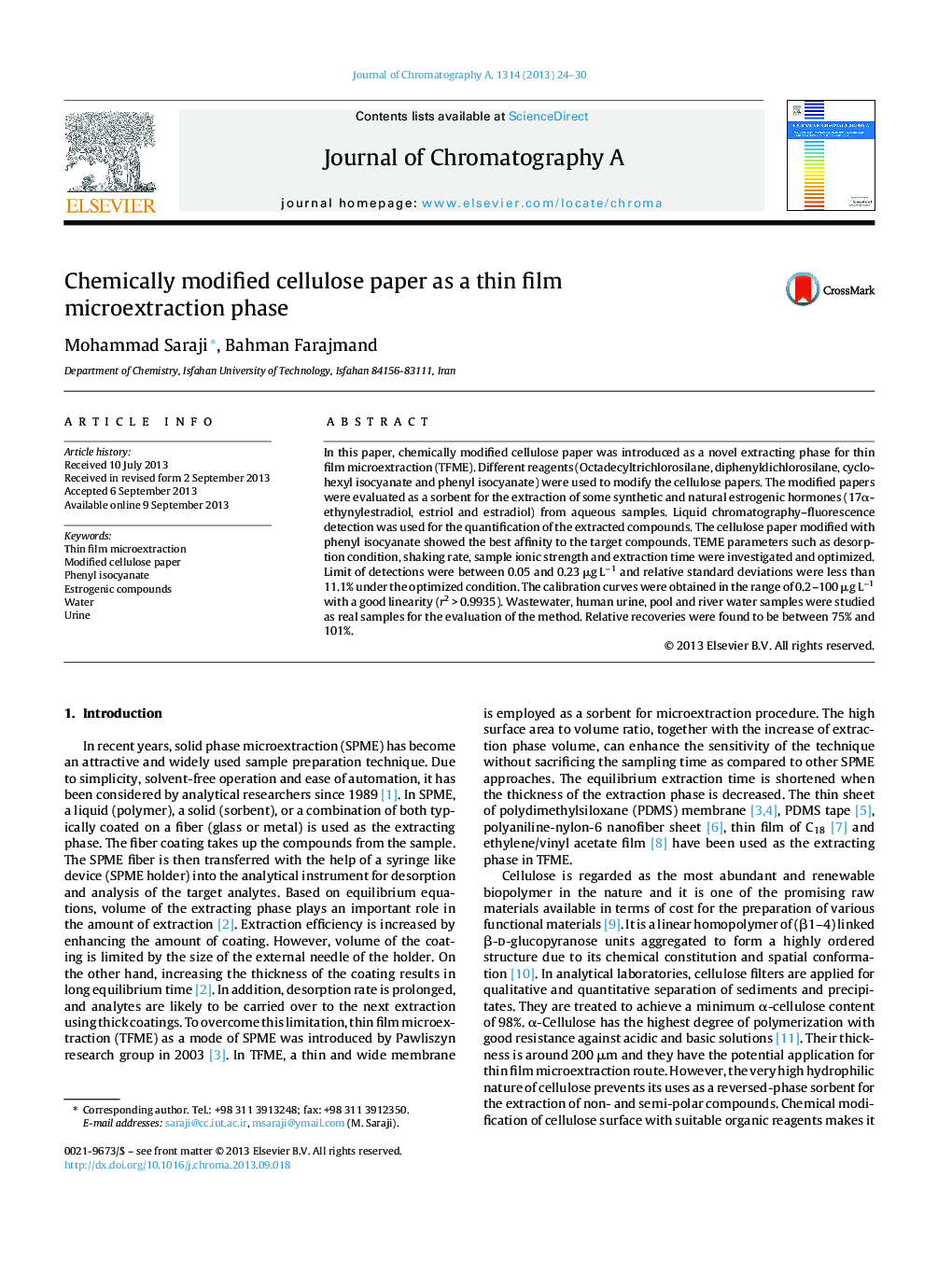| Article ID | Journal | Published Year | Pages | File Type |
|---|---|---|---|---|
| 1200967 | Journal of Chromatography A | 2013 | 7 Pages |
•Cellulose papers were modified with different chemical reagents.•The modified cellulose papers were used as extracting phase for thin film microextraction (TFME).•Extraction efficiency of the modified papers were studied.•Estrogenic hormones were selected as model compounds for TFME.•Water and urine samples were analyzed by TFME–HPLC–FLD.
In this paper, chemically modified cellulose paper was introduced as a novel extracting phase for thin film microextraction (TFME). Different reagents (Octadecyltrichlorosilane, diphenyldichlorosilane, cyclohexyl isocyanate and phenyl isocyanate) were used to modify the cellulose papers. The modified papers were evaluated as a sorbent for the extraction of some synthetic and natural estrogenic hormones (17α-ethynylestradiol, estriol and estradiol) from aqueous samples. Liquid chromatography–fluorescence detection was used for the quantification of the extracted compounds. The cellulose paper modified with phenyl isocyanate showed the best affinity to the target compounds. TEME parameters such as desorption condition, shaking rate, sample ionic strength and extraction time were investigated and optimized. Limit of detections were between 0.05 and 0.23 μg L−1 and relative standard deviations were less than 11.1% under the optimized condition. The calibration curves were obtained in the range of 0.2–100 μg L−1 with a good linearity (r2 > 0.9935). Wastewater, human urine, pool and river water samples were studied as real samples for the evaluation of the method. Relative recoveries were found to be between 75% and 101%.
